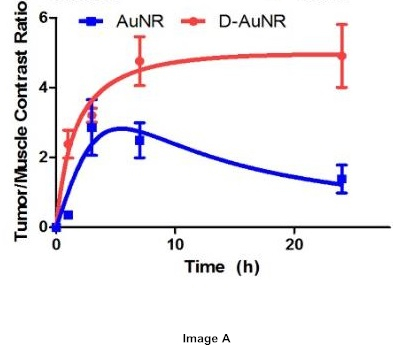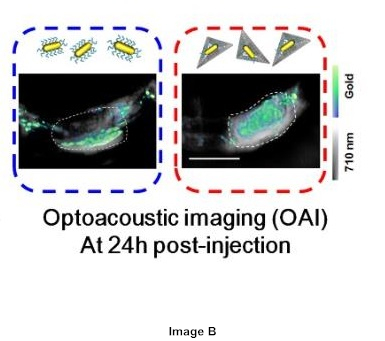
Early diagnosis, accurate staging, and image-guided surgical resection of tumors are always the major clinical challenges for improving patients’ curative effect and life cycle. Currently, available conventional imaging techniques are unable to fulfill these demands due to their low sensitivity and specificity, poor spatial resolution, low penetration, and/or harmful ionizing radiation.
Optoacoustic imaging (OAI), as a relatively new molecular imaging modality, has brought bright prospect to enhance the depth of imaging penetration as well as spatial resolution, and it has also maintained a high contrast of optical imaging.
Besides, utilized nonionizing radiation and characterized with good biological safety and tissue compatibility, OAI modality was safe for patients and medical staffs in clinic.


The research team has made great progress on the accurate therapy of breast tumor by utilizing the newly developed technologies of OAI and photothermal therapy (PT).
OAI functioned as an efficient photoacoustic imaging probe to improve the imaging quality in interior structure of tumors and decrease imaging dosage. In addition, the developed D-AuNRs could be responded to near infrared irradiation for light and heat treatment of tumor and effectively inhibited tumor regrowth. As a result, the experimental study proved that the life cycle of the tumor-bearing mice could be efficiently prolonged.
The new OAI agent was developed by associate Prof. DU Yang from TIAN Jie’s research team of the Key Laboratory of Molecular Imaging in Institute of Automation, Chinese Academy of Sciences, collaborated with Prof. DING Baoquan from National Center for Nanoscience and Technology CAS and Prof. Vasilis Ntziachristos, director of the Institute for Biological and Medical Imaging (IBMI) and also the founder of Optoacoustic Imaging (OAI) at the Technical University of Munich.
The researchers expected that the combination of OAI with the developed D-AuNRs would encourage further studies for investigating broad applications in biomedical treatments and potentials in clinical translation in the near future.

86-10-68597521 (day)
86-10-68597289 (night)

86-10-68511095 (day)
86-10-68512458 (night)

cas_en@cas.cn

52 Sanlihe Rd., Xicheng District,
Beijing, China (100864)

